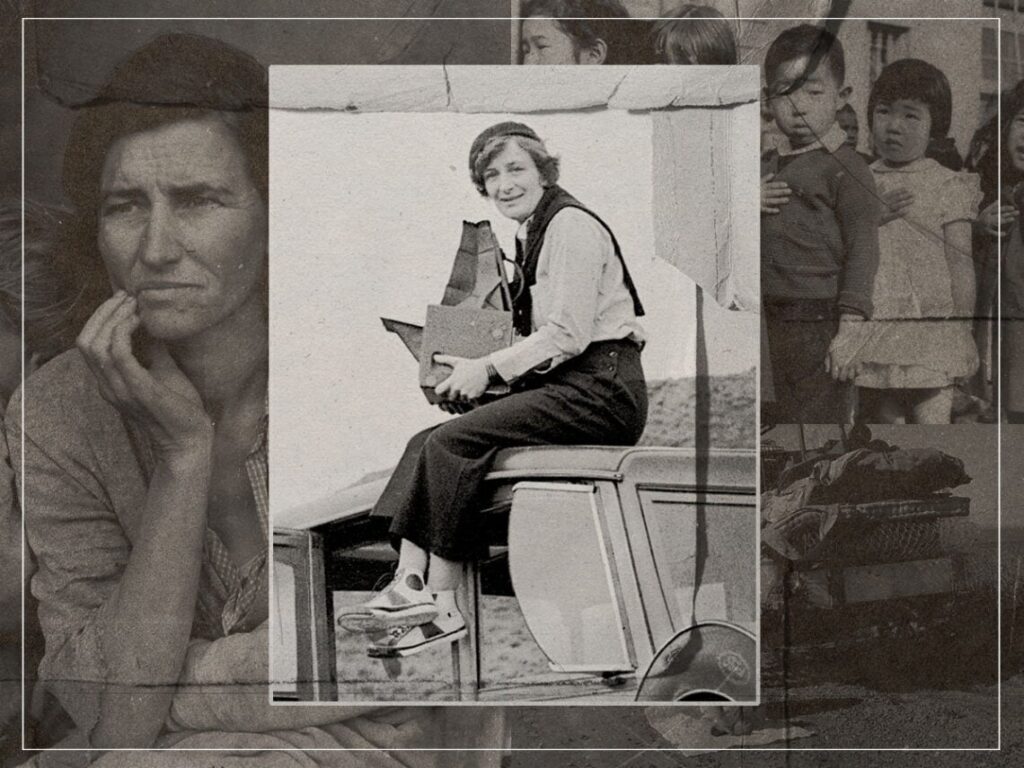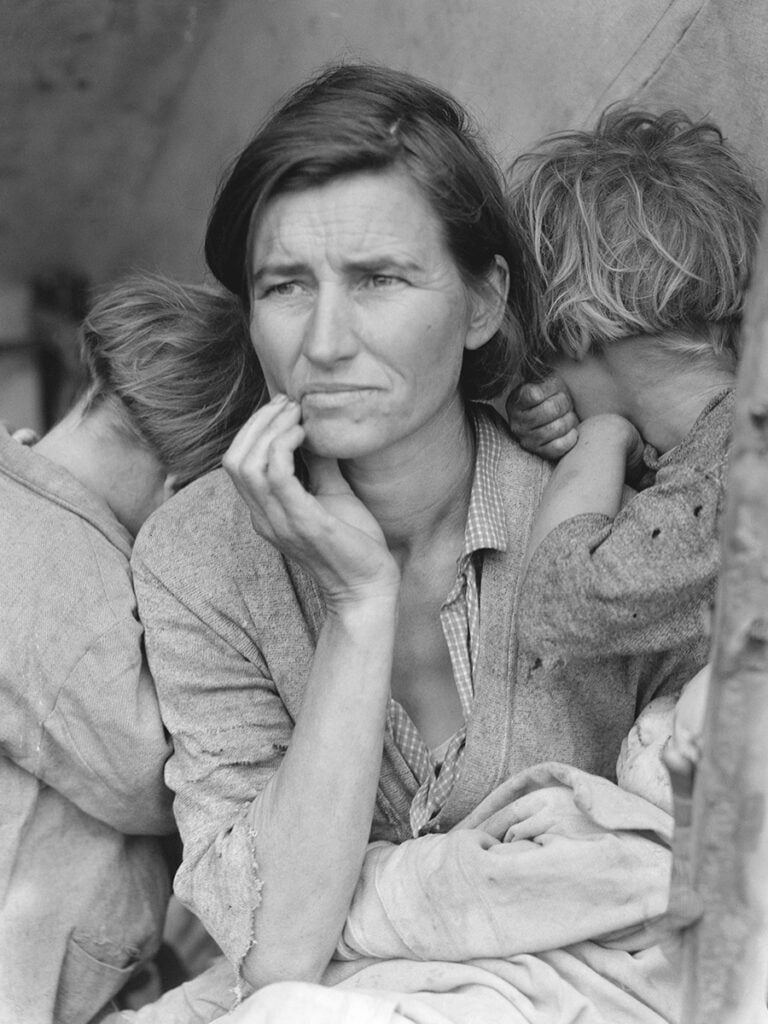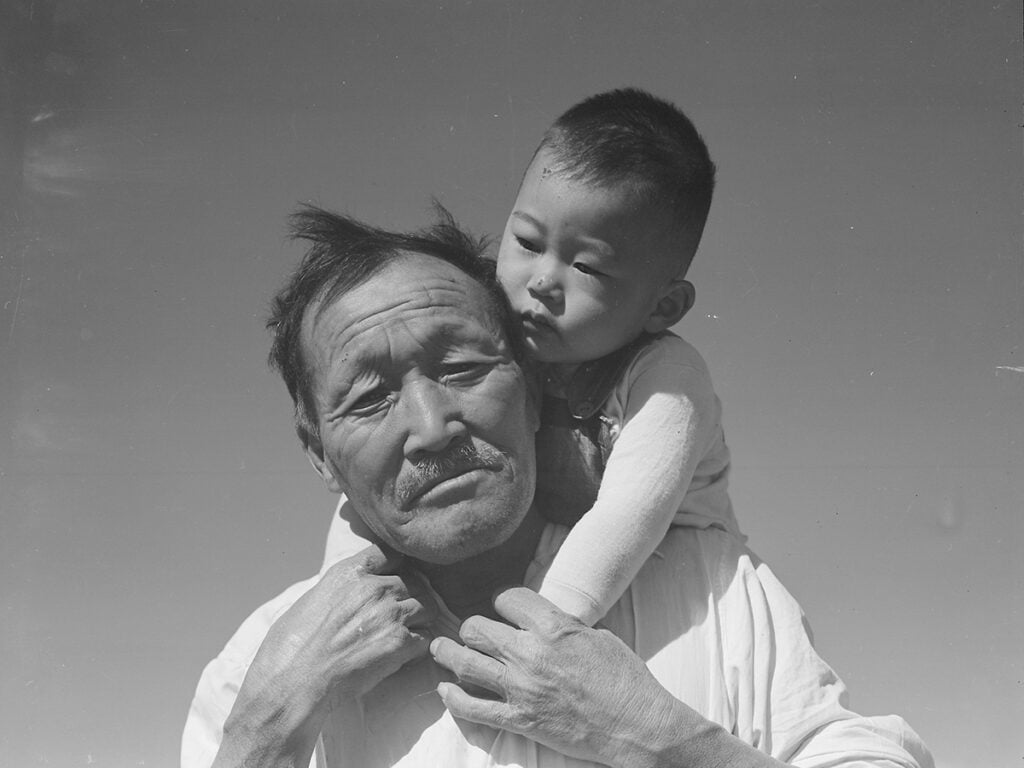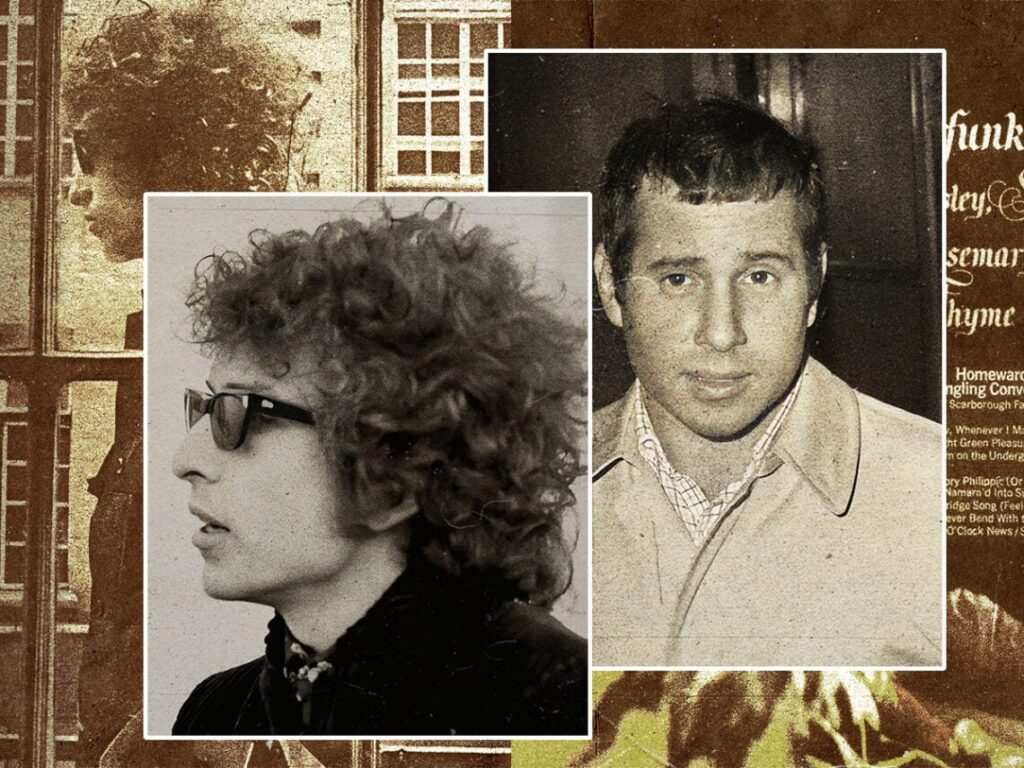Dorothea Lange: exploring the legacy of one of the most important American photographers
 Posted On
Posted On
(Credits: Far Out / Dorothea Lange)
Photography is an all-encompassing medium that can be used for various purposes—art, activism, documentation, or maybe a blend of all three. During the late 19th and early 20th centuries, pictorialism dominated, a style of photography that emphasised the artistry of the medium. These photographers often used techniques such as slow shutter speeds to create dreamy effects, detaching their images from reality.
However, there were certain artists who proved that documentary photography could be creative, too, becoming more than just moments frozen in time. There is real artistry to be found in the best works of documentary photography, where composition, focal length, and a myriad of other features can be used to create poignant images. Perhaps the photographer omits certain subjects to focus on one specific person, or maybe they concentrate their lens on someone’s worn hands or tired feet rather than their face. So much can be said through a photograph, and the best ones can even be used as a form of activism.
Dorothea Lange was one of the most important photographers of all time. She often wielded her lens at subjects suffering through poverty to capture the dire state of America. Her photos typically captured despair and desperation during the Great Depression, when the country’s economic state was indescribably bad. Yet, with her camera, Lange gave a voice to the disadvantaged and the starving, who demonstrated just how shocking their living conditions were by simply looking at (or away from) the camera.
Her most famous image is Migrant Mother, Nipomo, California, an instantly recognisable photo of a woman looking out past the camera, holding a hesitant hand to the side of her face. She is slightly frowning, as though she is thinking about the dire conditions she must raise her family in, looking considerably weathered despite only being 32. Some of her children surround her, but they’re all facing the other way, as though they’re being shielded from the horrors of the world. All of their clothes look muddy and torn, and a baby is sleeping on her lap, bundled up in an equally dirty-looking piece of material.
The photo was published in The San Francisco News, highlighting the desperate need for governmental aid. Luckily, the State Relief Administration sent food to Nipomo the next day, proving that photography really could work as a form of activism and a call for change.
Lange initially started her career taking portraits after acquiring a camera in 1913, when she was just 18. She worked as an assistant for various artists before opening her own studio and photographing many upper-class people. Yet, the lives of the less privileged came to fascinate her more, so she began photographing these poor communities affected by the Great Depression with an attentive lens.
These images told stories, invoking scenes of domestic and economic struggles, often contrasting adults and children in the same frames. Lange clearly wanted to emphasise the fact that these young, innocent children were already being subjected to pain, hardly given a chance to get anywhere in life. She often shot images of children with their fathers, too, something that was rather unusual for the time, proving her commitment to showing the full scope of real life.
Even Lange’s less assuming photos reveal so much about the economic circumstances faced by people in the affected areas, particularly the south. A simple image of a person holding a child, a portrait of a young girl or a photo of two men sitting in the street to have a conversation communicates so much through Lange’s careful eye. We are forced to pay attention to the subjects’ torn clothes or slender frames, physical manifestations of a tragic time in American history.
Lange was hired to create photographs that could be used by various organisations, such as the Farm Security Administration and LIFE magazine, to spread awareness and capture a seminal moment in time. She often rebelled against her employers when they asked her to promote messages she wasn’t comfortable with. For example, when she was employed to photograph incarcerated Japanese Americans for the US War Relocation Authority, she created photos that were critical and unflattering towards the American government, and she was subsequently fired.
Lange thrust her camera into the depths of American society, where poverty and harsh living conditions affected millions of people. She even took her camera abroad to photograph people in places like Palestine and Vietnam, clearly intrigued by other cultures. She created a rich body of work that transformed documentary photography for the better. Her work was both activism and art, with Lange asserting that photography can -and will- be used to change the world.


(Credits: U.S. National Archives and Records A…

United States flag….


